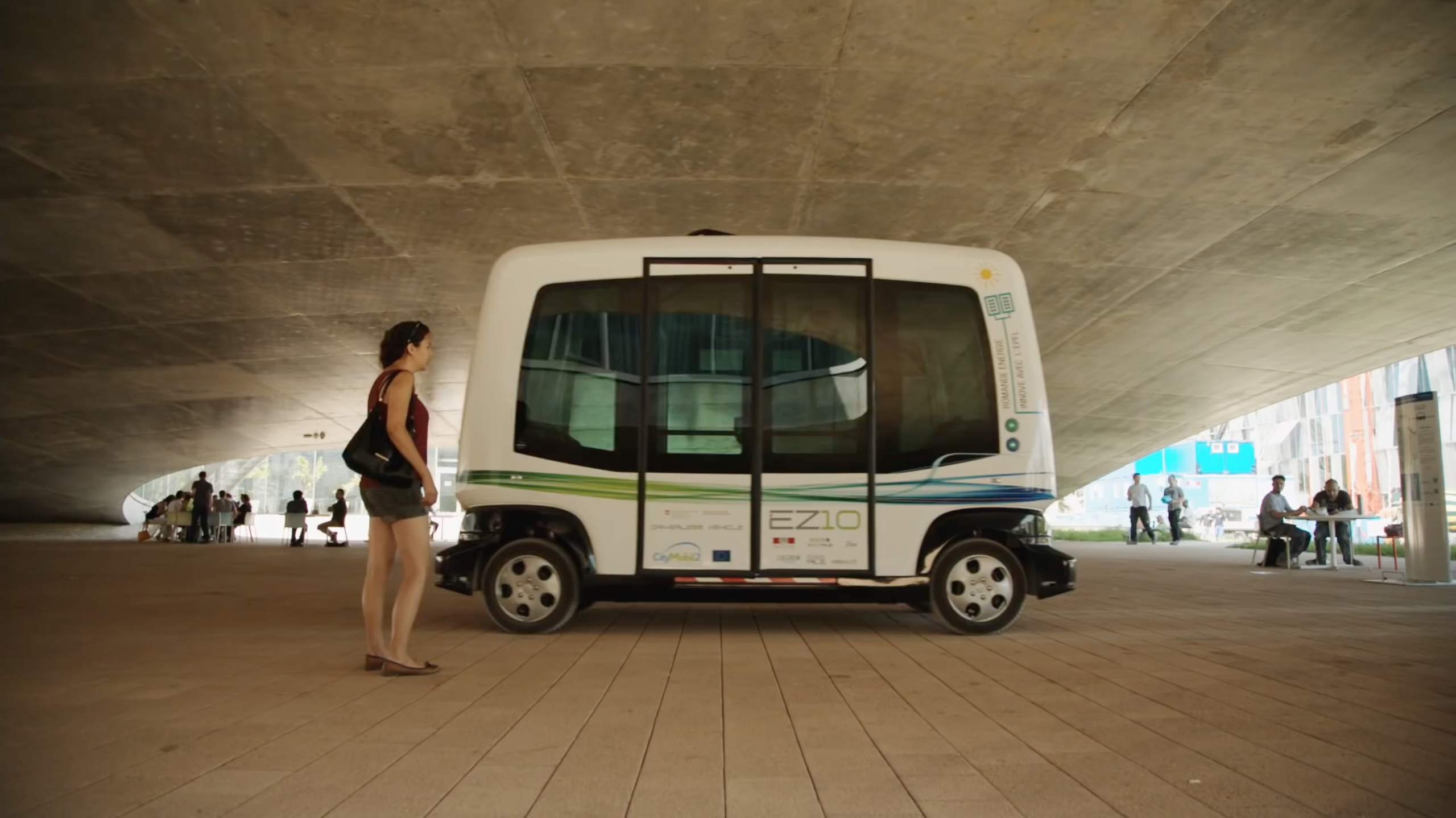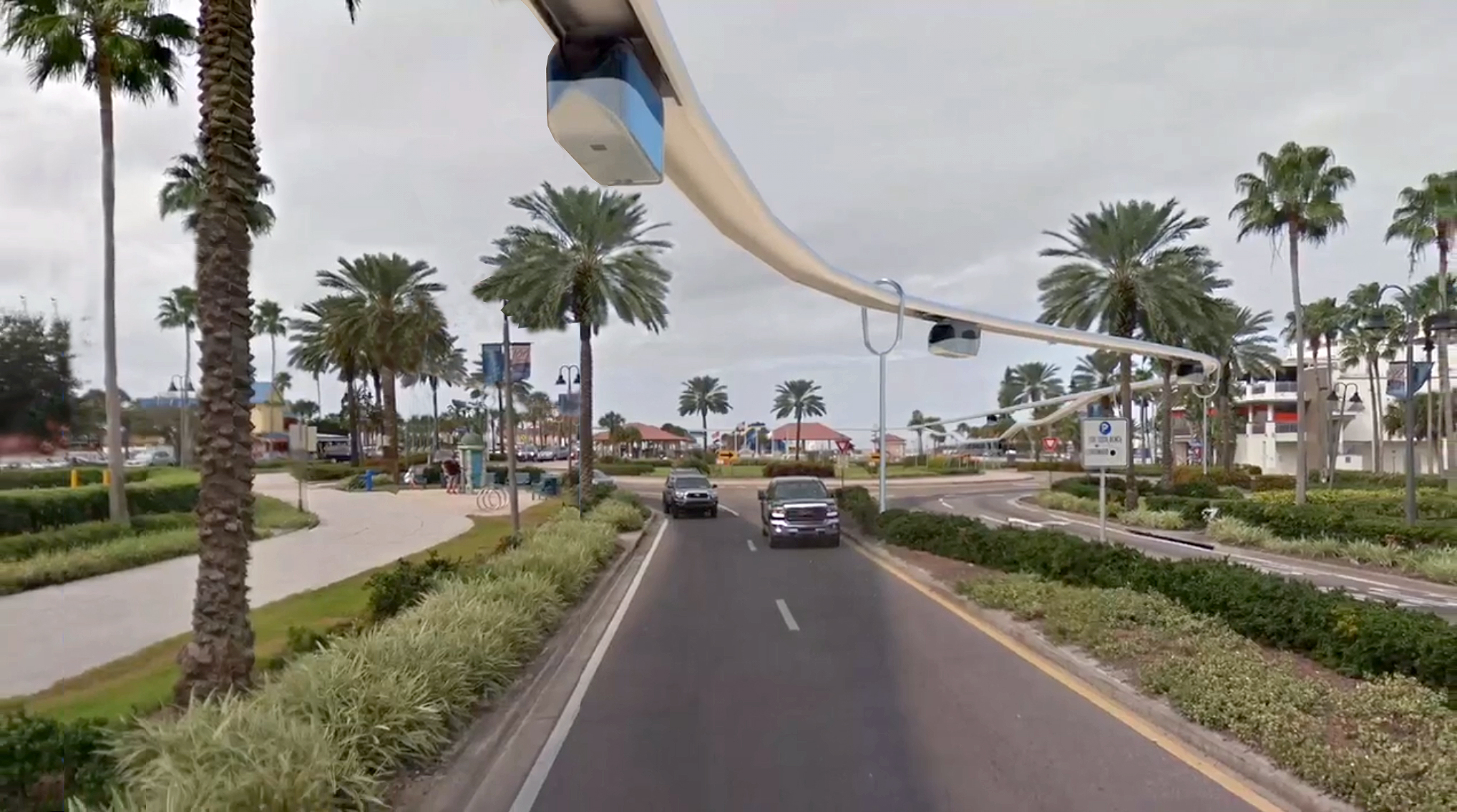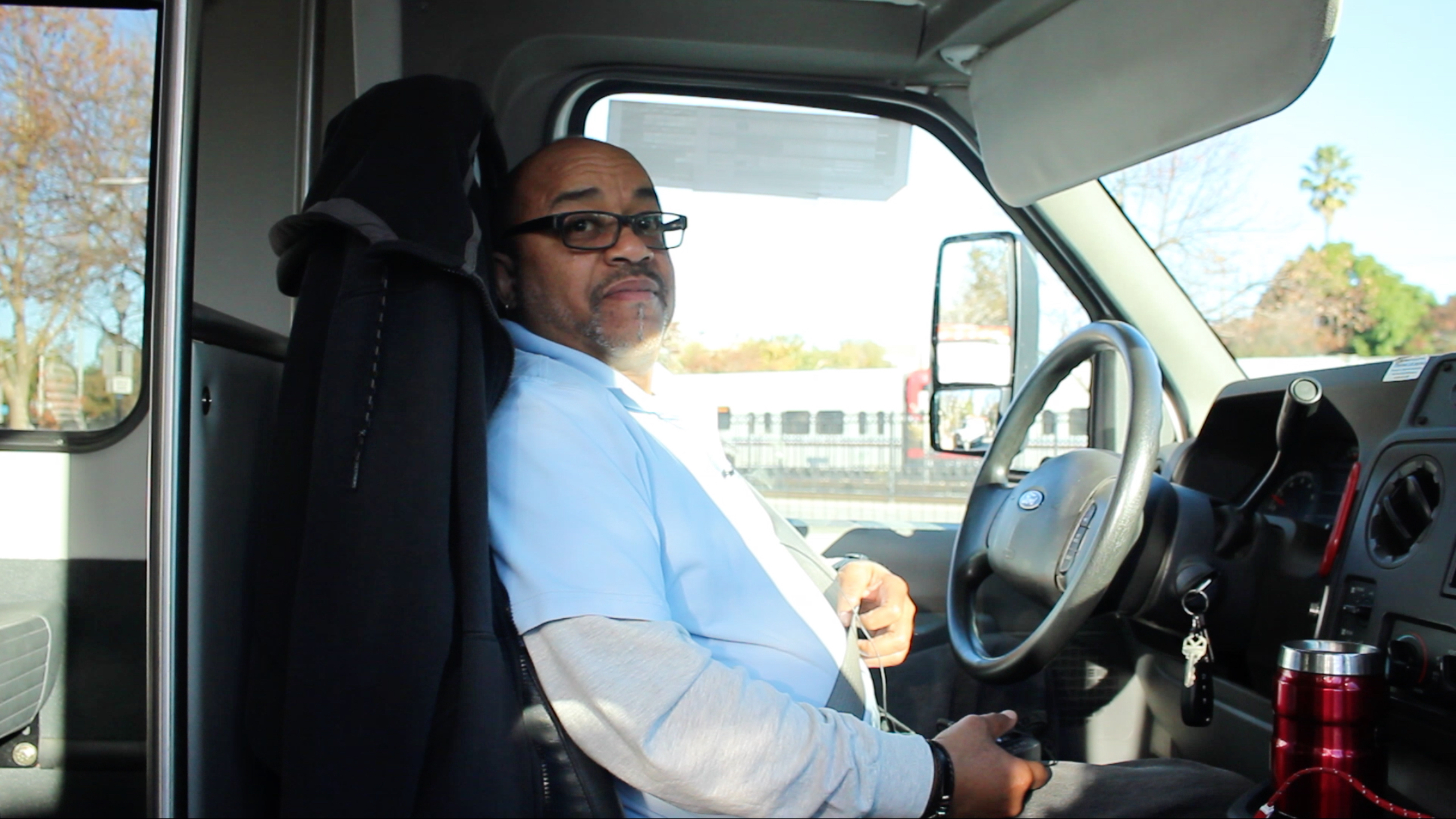In about 10 years, employees in Mountain View’s North Bayshore area might zoom to work on driverless buses, running as frequently as once or twice per minute, or in small pods that hang from an elevated track and move with an average speed of 60 miles per hour.
As public transit proves insufficient to absorb growing traffic, the city of Mountain View is considering building an automated — meaning driverless — transit system. It would connect downtown Mountain View to the North Bayshore area, where Google’s headquarters is located.
It could become the first automated transit system in the heart of a Bay Area city. Officials are planning a route along North Shoreline Boulevard, connecting Mountain View’s Caltrain Station to the Googleplex and the NASA Ames Research Center in a loop or a T-shape, a distance of roughly three miles.
“The idea is that people could whisk to North Bayshore and get there from downtown within less than 10 minutes — even in high commute periods,” said Mountain View Mayor Lenny Siegel.
Today, commuters have the choice between buses operated by the Santa Clara Valley Transportation Authority (VTA), shuttles that Google and other companies provide for their employees and two shuttles that are jointly run by the city and companies, called MVgo and Mountain View Community Shuttle. But buses often get stuck in traffic.
Some commuters say they would be happy to see the city take steps to ease traffic congestion.
“On my way to work, it is pretty efficient, but when I’m coming home during rush hour, very often the shuttle takes a much longer time to get back,” said Sami Sillanpaa, who takes MVgo every day on his way to work. “So anything that makes my commute easier would be good.”

Justin Preston, who often rides MVgo from the Mountain View Caltrain station to his office in North Bayshore, agrees.
“Regardless of whether or not it was an autonomous shuttle or something on rails, I would most likely be interested in it,” Preston said.
The city is exploring two types of automated transit — automated vehicles and group rapid transit.
Automated vehicles like autonomous buses can either mix with street traffic or use dedicated lanes. They can run once or twice per minute — much more frequently than regular buses — as there are no drivers to pay, according to Jim Lightbody, project manager of a city study of automated transit that is expected to be completed by February.

(Courtesy: EasyMile)

Group rapid transit involves vehicles that carry small groups of people and operate on a guideway — a track that elevates or otherwise separates the transit system from the road traffic.
Siegel said he favors group rapid transit because it would run independently of road traffic. This way, the system’s vehicles could move faster and even more frequently than autonomous busses, in intervals between every 10 to 45 seconds, according to the study.
Margaret Abe-Koga, a city councilmember and former chair of the VTA Board of Directors, said the city might start out with automated vehicles that operate on dedicated bus lanes.
“That’s probably the easiest and most … realistic option,” Age-Koga said.
Even with automated vehicles, the city could choose to build a guideway in order to separate the automated vehicles from the road traffic, according to Lightbody.
A guideway system for either group rapid transit or autonomous vehicles could cost as much as $80 million to $135 million per mile to build. Automated vehicles that operate partially on an elevated guideway and partially on dedicated lanes could lower these costs, Lightbody said.
After the city’s study is completed, City Council has to identify funding sources and vote on the project, which will take years to plan and build, according to Siegel.
“I am hoping that (in) 5 – 10 years we get some service,” Siegel said. “The front-end planning and studying for projects really takes a long time. So maybe I’m too optimistic.”
Mountain View hopes that the automated transit system could help deal with worsening traffic issues at a time when North Bayshore is slated to add 13,000 – 17,000 jobs by 2030.
“I don’t think there is any way that we’re going to be able to squeeze in 15,000 more commuters without more transit,” Siegel said.
The convenience of an automated transit system would incentivize commuters to take Caltrain and automated transit on their way to work instead of driving a car, according to Siegel.
Until the automated transit system is built, the city is already trying to reduce traffic in North Bayshore. Officials are planning a reversible bus lane between Middlefield Road and Plymouth Street on North Shoreline Boulevard and a new off-ramp at Highway 101, Siegel said.
On Dec. 12, City Council approved a plan that allows approximately 10,000 new housing units to be built in North Bayshore. The city hopes that residents will use local transportation instead of driving, according to Siegel.
“So, we need a transit system that runs not just at commuter hours but to serve the new housing,” Siegel said.
Although Mountain View would be the first city in the Bay Area to adopt an automated transit system in its inner city, driverless transit is “not exactly a new idea,” said to Elizabeth Deakin, professor emerita of City and Regional Planning and Urban Design at UC Berkeley.
Automated transit systems have been built in different parts of the world, most often in “relatively controlled environments” such as office parks and airports, Deakin said in a phone interview.
One example is the AirTrain, which carries passengers between terminals at San Francisco International Airport. The city of Morgantown, WV, adopted an automated transit system as early as the 1970s. Even BART could operate without a driver if they chose to do so, Deakin said.

While group rapid transit and large automated trains, called people movers, have been around for many years, the technology of automated vehicles is not yet fully developed, according to Deakin. Experts’ estimates for the breakthrough of automated vehicles lie between five and 20 years, Deakin said.
If Mountain View decides on an automated vehicle project, the city’s plans will depend on when the technology is going to be ready for implementation, according to Abe-Koga.
On top of these technological uncertainties, an automated transit system might have the human cost of putting bus drivers out of their jobs, Deakin and Abe-Koga said. Yet, not everyone described this as a disadvantage.
“I’ve been driving with MVgo for about three years now and I hadn’t heard of this automated transit system, but I think it’s a great idea,“ MVgo driver Jaunot Baker said. “Definitely the traffic in Mountain View is ridiculous, so I think it would be a great improvement.”

